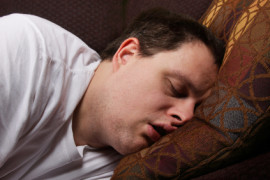Sleep apnea treatment improves both systolic and diastolic blood pressure, according to a new systematic review and meta analysis published in the Journal of the American Medical Association.
Unlike much of the literature, however, researchers compared the effects of both continuous positive airway pressure (CPAP) and mandibular advancement devices, which hold the lower jaw down and slightly forward, resulting in an open air passageway. The review found that both CPAP therapy and mandibular devices were equally effective at reducing blood pressure.
Earlier this year, a similar literature review of research published prior to 2013 suggested that more people who suffer from obstructive sleep apnea might be candidates for oral appliance therapy, as oral appliances had similar effects on cardiovascular markers as continuous positive airway pressure (CPAP) therapy.
Treating obstructive sleep apnea with a mandibular advancement device appears to be a very effective tool for managing obstructive sleep apnea (OSA), especially in those individuals who do not tolerate or have difficulty using a CPAP machine. A recent survey of CPAP users showed that only 50% of individuals prescribed a CPAP were compliant long-term.
OSA is a life-threatening condition that affects more than 18 million Americans, increasing their risk for heart disease, stroke, diabetes, obesity, cognitive impairment, and motor vehicle accidents. In addition to lowering blood pressure, research shows that treating sleep apnea improves cardiovascular markers, lowers glucose levels, and even reduces oral inflammation—not to mention reducing healthcare costs for those affected.
Source: CPAP vs Mandibular Advancement Devices and Blood Pressure in Patients With Obstructive Sleep Apnea



